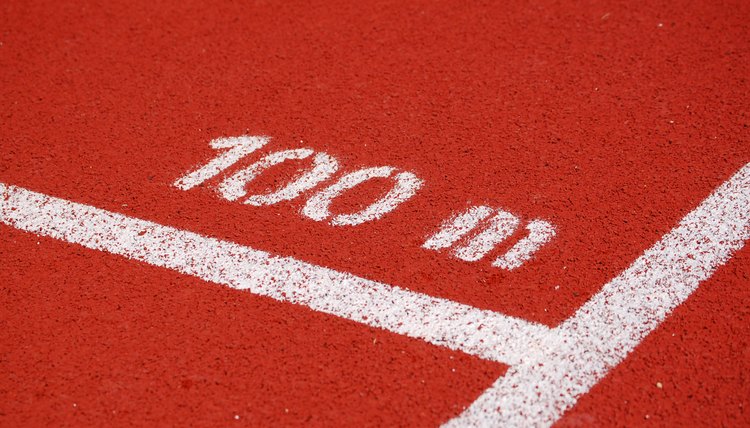The History of the 100 Meter Dash

The 100m dash is the short outdoor sprint competition that is generally performed on the “home straight” section of a standard running track. Olympic winners of the 100m dash are given the unofficial title of the fastest man or woman in the world. Today it is considered a staple among track and field athletes, but the history of the 100m dash extends to ancient history.
Ancient History
According to University of Alaska Fairbanks, the origins of the 100m dash can be traced to the “stadion,” a sprinting competition practiced in ancient Greece. One of the most competitive sports in the ancient Olympics, the stadion was a short-burst sprint that involved running 95 meters to a designated post and then running back to the starting position. Although initial versions of this sprint had runners taking their mark behind a stone groove carved in the ground, the ancient Greeks eventually invented the husplex, or starting gate.
Modern Olympics
The 100m dash is practically synonymous with Olympic track and field races -- it was part of the first Olympics of the modern era in Athens in 1896. Thomas Burke of the United States won the first awarded medal for the 100m dash, and was succeeded by other American sprinters until Reginald Walker of South Africa won the competition in 1908. Since then, the United States has received more than half of the 100m dash Olympic medals.
100-Meter Dash Technology
While sprinters in ancient Greece began the race from an upright position, today’s sprinters begin the race while crouching with their heels pressed against starting blocks. These blocks help racers gain an additional boost in the beginning of the race, improving acceleration and decreasing the number of meters it takes for the runner to reach their maximum speed while sprinting. According to the University of Alaska Fairbanks, starting blocks were introduced in the late 1920s and made their first appearance in the London Olympic Games in 1948.
Records and Champions
According to the International Association of Athletics Federation, the men’s world record has been improved upon 12 times since 1968, when electronic timing was introduced to the Olympic track sports. In August of 2009, Usain Bolt of Jamaica secured the world record of 9.58 seconds, breaking his own previous record of 9.69 seconds. The women’s world record is 10.49 seconds and was set in by Florence Griffith-Joyner in July of 1988.
References
Writer Bio
Based in the Appalachian Mountains, Brian Connolly is a certified nutritionist and has been writing professionally since 2000. He is a licensed yoga and martial arts instructor whose work regularly appears in “Metabolism,” “Verve” and publications throughout the East Coast. Connolly holds advanced degrees from the University of North Carolina, Asheville and the University of Virginia.
